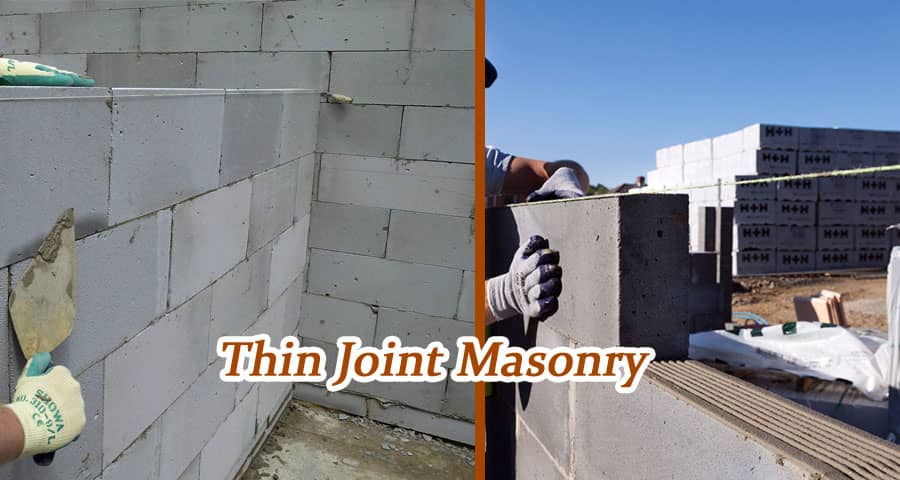The Ultimate Guide to Thin Joint Masonry

Thin joint masonry is a construction technique that offers numerous benefits, from improved efficiency to cost-effectiveness. In
Understanding Thin Joint Masonry
Thin joint masonry, also known as thin bed or thin set masonry, is a construction method where mortar joints are significantly thinner compared to traditional masonry techniques. Instead of using standard mortar, thin joint masonry utilizes specialized thin-bed mortar, typically with a thickness ranging from 1 to 3 millimeters.
Advantages of Thin Joint Masonry
- Enhanced Efficiency: One of the primary advantages of thin joint masonry is its enhanced efficiency. The use of thin-bed mortar allows for faster construction, as it requires less time to set compared to traditional mortar. This accelerated setting time enables builders to complete projects more quickly, reducing overall construction time and costs.
- Improved Precision: Thin joint masonry offers improved precision and accuracy in construction. The thinner mortar joints result in tighter, more consistent bonds between bricks or blocks, leading to stronger and more durable structures. Additionally, the use of specialized tools, such as trowels with fine-toothed edges, facilitates precise placement of bricks or blocks, ensuring uniformity and quality throughout the construction process.
- Cost-effectiveness: Another significant advantage of thin joint masonry is its cost-effectiveness. The reduced mortar consumption and faster construction times translate to lower labor and material costs. Additionally, the improved thermal efficiency of thin joint masonry structures can result in long-term energy savings, further enhancing the overall cost-effectiveness of this construction technique.
Applications of Thin Joint Masonry
Thin joint masonry finds a wide range of applications across various construction projects, including residential, commercial, and industrial buildings. Some common applications include:
- Residential Construction: In residential construction, thin joint masonry is often used for building walls, partitions, and facades. Its efficiency and cost-effectiveness make it an attractive option for homeowners and developers looking to construct durable and aesthetically pleasing structures.
- Commercial Buildings: In commercial construction, thin joint masonry is utilized for a variety of purposes, including interior and exterior walls, storefronts, and office partitions. Its ability to provide strong and durable structures quickly makes it an ideal choice for meeting tight project deadlines and budget constraints.
- Industrial Facilities: Thin joint masonry is also commonly employed in the construction of industrial facilities such as warehouses, manufacturing plants, and distribution centers. Its durability, thermal efficiency, and cost-effectiveness make it well-suited for these demanding environments, where strength and reliability are paramount.
Best Practices for Thin Joint Masonry
To ensure the successful implementation of thin joint masonry, it is essential to adhere to best practices throughout the construction process. Some key considerations include:
- Proper Material Selection: Selecting the appropriate thin-bed mortar and masonry units is crucial for achieving optimal results. It is essential to choose materials that are compatible with each other and suitable for the specific application and environmental conditions.
- Precise Installation: Maintaining precise alignment and spacing during installation is essential for creating strong and durable thin joint masonry structures. Utilizing specialized tools and techniques can help ensure accurate placement of bricks or blocks, resulting in uniformity and consistency throughout the project.
- Attention to Detail: Attention to detail is critical when working with thin joint masonry. Careful attention should be paid to mortar mix ratios, joint thickness, and curing times to ensure the integrity and longevity of the finished structure.
Conclusion
Thin joint masonry offers a host of benefits, including enhanced efficiency, improved precision, and cost-effectiveness. By understanding its advantages, applications, and best practices, builders and developers can harness the full potential of this versatile construction technique to create strong, durable, and aesthetically pleasing structures.
